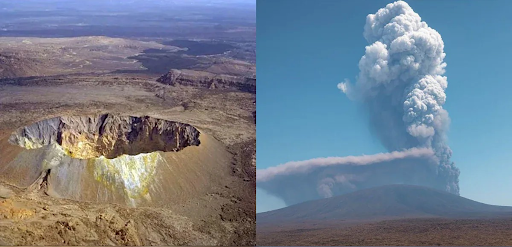Description
Disclaimer: Copyright infringement not intended.
Context
Astrophysicist Raga Deepika Pucha's team discovers extensive samples of intermediate-mass black holes and active dwarf galaxies, enhancing cosmic evolution research
About Dwarf Blackholes
About Blackholes
- These are extremely dense, the gravitational attraction is so high that even light cannot escape.
- Albert Einstein first predicted the existence of black holes in 1916
- The first image ever recorded of a black hole was released in 2019
- Black holes do not die.
- They are theoretically predicted to evaporate over extremely long-time scales.
- Hawking predicted that black holes could radiate away energy.
- Black holes are not wormholes which can be thought of as tunnels that connect two separate points in space and time.
- Dwarf blackholes are small galaxies which typically contain just a few billion stars different from larger ones which can hold hundreds of billions.
- They are the most abundant but difficult to detect type of galaxy in the universe.
- They are difficult to detect because of
- low luminosity
- low mass
- smaller size
- They are most commonly found in galaxy clusters.
- Our Milky Way galaxy is orbited by more than 20 dwarf galaxies.
- Because most of them come from galaxy collisions, many dwarf galaxies are grouped into irregular shapes.
- However, some dwarf galaxies have spiral arms or look like mini-elliptical galaxies.
- The closest dwarf galaxy to Earth is the Canis Major Dwarf Galaxy.
- The Andromeda Galaxy (M31) is the closest major galaxy to the Milky Way.
- The nearest known black hole to Earth is Gaia BH1
Sources:
TOI
|
PRACTICE QUESTION
Q. What significant discovery was made by the team led by Raga Deepika Pucha?
A) Detection of the first exoplanet
B) Identification of the largest sample of intermediate-mass black holes and active dwarf galaxies
C) Discovery of water on Mars
D) Observation of the oldest known star
Answer: B) Identification of the largest sample of intermediate-mass black holes and active dwarf galaxies
Explanation:
Raga Deepika Pucha's team utilized data from the Dark Energy Spectroscopic Instrument (DESI) to compile the most extensive sample to date of intermediate-mass black holes and dwarf galaxies hosting active black holes, tripling the existing census and providing deeper insights into black hole and galaxy evolution.
|











